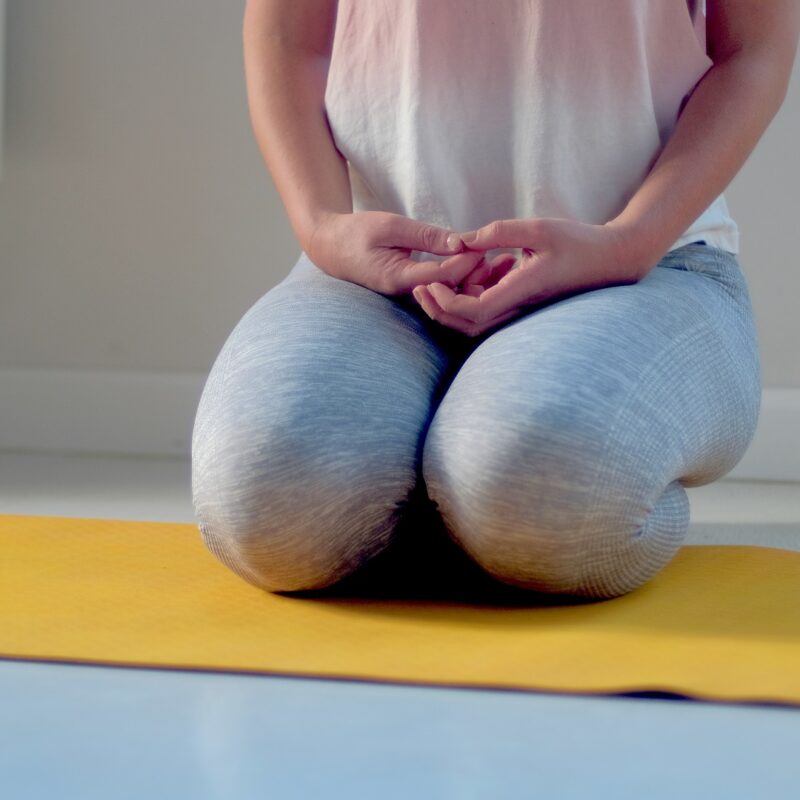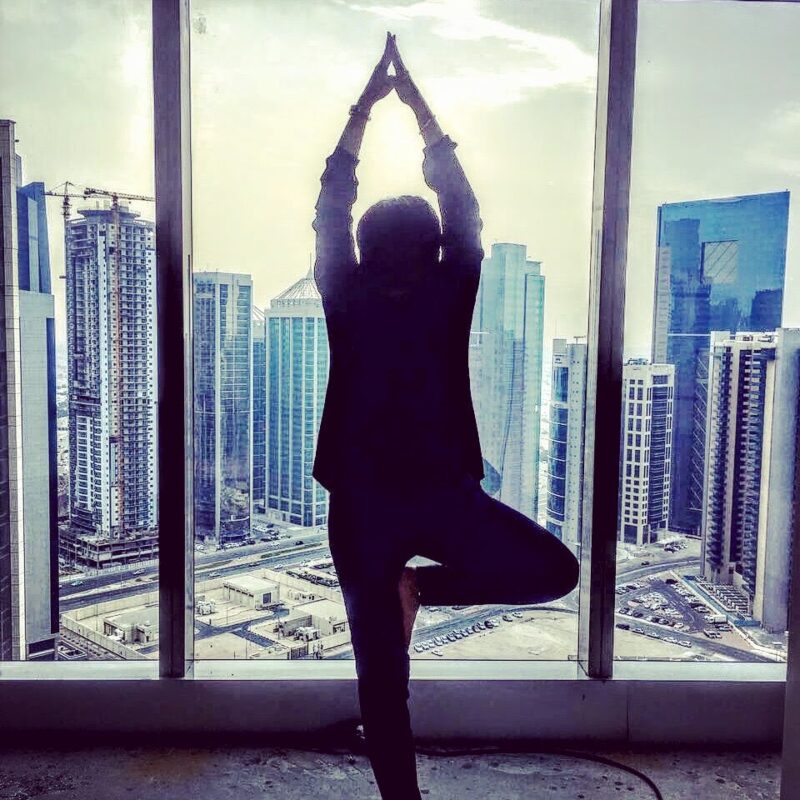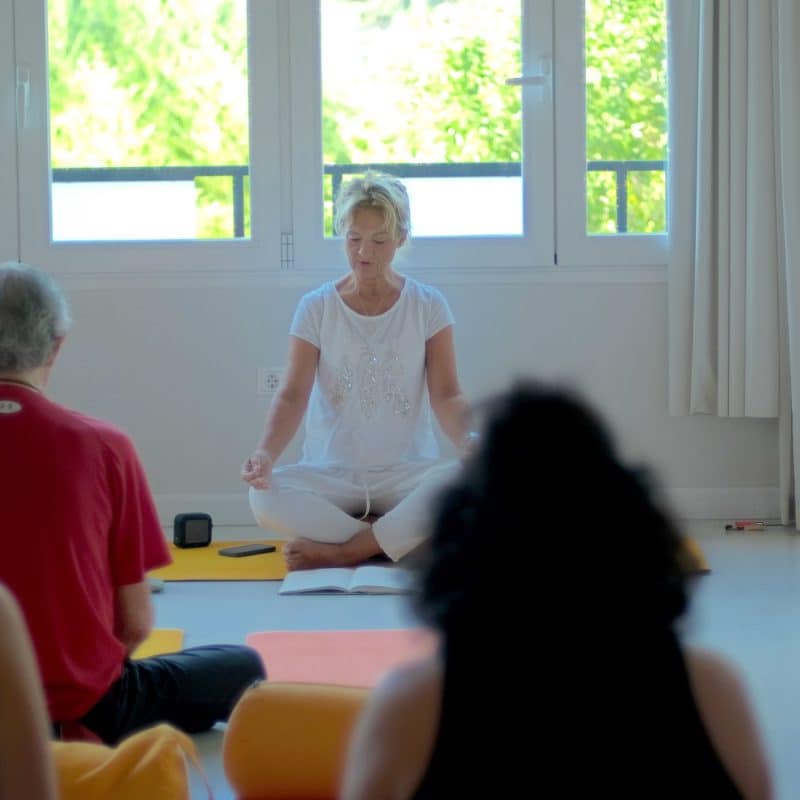Finding Balance In Turbulent Times
“So the darkness shall be the light, and the stillness the dancing.” – T.S.Eliot
We live in strange times. Not exactly a newsflash.
The reality of suffering (or ‘Dukkha’ in Pali) is the very first of the Four Noble truths of the Buddhas Dharma teachings. Both externally in our world, in our lives, for those we love, and within our own hearts. These are of course matched with great joy and beauty, or as the Buddha put it, “The ocean of tears, and almost unbearable beauty” that makes up our human realm.
But what to do? How to live in balance, and peace and joy? Thankfully, in the next three Noble Truths he offers an explanation for Dhukka, and then in The Noble Eightfold Path, a solution. But, I’ll save all that for another time…
One of my favourite stories is that of the great Theravadan meditation teacher (and my personal hero) the Venerable Ajahn Chah, walking through the forest with a group of novice monks.
Spotting a large boulder to his right, he asks them “Do you see that boulder?”, “Yes” they reply. “Is it heavy?” he asks them. “Yes” they reply. Turning to them with a sweet smile he answers “Not if you don’t pick it up!”
Ok, so we all get the concept, don’t pick up the rock, but finding a way to respond rather than to react, not to feed into our own insecurities picking up heavy resentments and fuelling discord, and to find a path through confusion, fear & attachment is easier said than done, and requires compassionate and skilful practice. Living in peace and joy is not for the faint hearted, and in the Sixth Noble Truth, the Buddha helps us to see that a little effort goes a long way.
The Meaning of Right Effort – A Simpler Way ?
So, what is Right Effort? There are many teachings about Right Effort (Sammappadhāna in Pali & the sixth part of The Noble Eightfold Path) but in essence, it is simply the effort to be mindful, to be present with loving awareness, learning how to generate or cultivate what is skilful, caring for the world around us, and living more in the now. The effort to abandon old habits and fears of suffering, and the effort to sustain new, positive patterns.
This from Alan Watts, “The art of living in neither careless drifting on the one hand, nor fearful clinging to the past or anticipation of the future. It consists of being sensitive to each moment and regarding it as utterly new and unique, and having the mind and the heart open and wholly receptive.”
Our daily life is by its very nature made up of our activities and habits. By practicing Right Effort, gradually we become more mindful, conscious and caring about how we drive our car for instance, or how we relate to people we encounter, how we choose and prepare our food, and how we eat our meals. All of this leading us to a clearer and calmer state of being. More compassionate to ourselves and therefore to others.
The Buddha often spoke specifically about four states of mind, the four ‘Brahma Viharas’ as divine or god-like dwellings, or four ‘Sublime States’. These being kindness, compassion, sympathetic joy and equanimity. He considered these to be the great healers of tension and conflict, builders of harmony and cooperation, serving as potent antidotes to the poisons of hatred, cruelty, envy and partiality so widespread in our human realm.
The fourth Brahma Vihara, is what is known in Buddhist practice as Equanimity (or ‘Upekkhā’ in Pali translation). A wonderful quality of calm spaciousness and balance of heart offering room for one of my personal favourites (when I can manage it!) the ‘Sacred Pause’.
’The Sacred Pause’ – It’s Spiritual Weight in Gold ✨
Says Victor Frankl, the Austrian neurologist, psychiatrist and Holocaust survivor of the need for this spaciousness, “In between stimulus and response there is a space, in that space lies our power to choose our response. In our response lies our growth and our freedom.”
So basically, when triggered, before firing off that angry text, cutting comment or bitter look, by pausing, accepting and simply recognising what’s going on comes the space to stop, to regroup and breathe. Yes, it is hard, yes it hurts, but hurt will pass, pain can be soothed and no gain will ever be achieve0d long term through anger and reactivity.
The Buddhist teacher and psychologist Tara Brach puts this beautifully in her book ‘Radical Acceptance’.
“Often the moment when we most need to pause is exactly when it feels most intolerable to do so. Pausing in a fit of anger, or when overwhelmed by sorrow or filled with desire, may be the last thing we want to do. Pausing can feel like falling helplessly through space – We have no idea of what will happen. We fear we might be engulfed by the rawness of our rage or grief or desire. Yet without opening to the actual experience of the moment, acceptance is not possible.”
Through meditation, this sense of balance and equanimity will develop naturally, but it can also be cultivated, allowing us the possibility of finding some semblance of peace in our hearts amidst turmoil or fear, if we can recognise, and continue to recognise that life is not in our control, and that we are a tiny part of a great and beautiful dance.
Having been many years in recovery I have recited, possibly a thousand times, the well-known serenity prayer, “May I have the serenity to accept the things I cannot change, the courage to change the things I can, and the wisdom to know the difference.”
Wisdom recognises that although we may deeply love others and offer them assistance, in the end we must all be there and learn for ourselves. Our spiritual journeys are our own, and only we can be the source of our own liberation. The practice of equanimity helps to provide this balance, combining a wise and understanding mind with a compassionate heart.
Joy & Beauty In The Present Moment
A few years ago, the great Zen master Suzuki Roshi invited a few great up & coming Zen masters to help teach him on some important panel in Huston Texas. One of these was a man called Katagiri, who didn’t speak very good English. When asked to teach Dharma he became a little embarrassed, Roshi encouraged him saying “hey, you don’t need to speak great English to teach the Dharma.” Look I’ll show you.. So the Bell was rung and Suzuki Roshi stood up in front of this huge audience and said these simple words.
“Today is today, today is not yesterday. Today is not tomorrow. Today is today” and then he bowed and got down and smiling, said to Katagiri. “Ok, six words right? There’s a Dharma teaching for you.”
In meditation we learn to breathe, to quieten the mind, opening our hearts to the beauty of things as they really are, coming to rest in the present moment, alive where we are.
This is really the game, the essence of spiritual practice, and it is in this moment that we can discover balance, timelessness, how not to be lost in the past or the future. Recognising that the past is simply memory, and the future is fantasy, we discover that it is only in the reality of the present that we can truly love, awaken, and find peace, understanding and connection with ourselves, and the world around us.
“Our eyes are filled with dust. There is no need to seek a Pure Land somewhere else. We only need lift our heads and see the moon and the stars.”
Fragrant Palm Leaves ? Thich Nhat Hanh 1964.




4 Comments
Thanks to the terrific manual
Many thanks. Glad you enjoyed it
I’m so glad this was helpful. Sending love ♥️ x
“Hundreds of candles can be lit from a single candle, and the existence of the candle will not be shortened. Pleasure never ever decreases by becoming shared.” The BuddhaCandles are an age previous conventional component of Buddhist rituals. In conjunction with incense and bouquets, they are positioned in front of Buddhist shrines or statues and photos of the Buddha as a mark of respect. They are frequently accompanied by offerings of meals and consume. The mild of the burning candle flame represents the gentle of the Buddha’s teachings. Candles and incense also evoke the condition of impermanence and modify.Their light can also be stated to symbolize the enlightenment of the Buddha.Thailand Buddhist Candle Pageant”Just as a candle cannot burn up with no fireplace, males can not dwell with no a religious daily life.” The BuddhaBuddhist Lent Working day in Thailand, an overwhelmingly Buddhist region is in July each and every 12 months and is largely practiced by proven monks. The working day prior to the start off of Lent, the Candle Festival is celebrated by Thai men and women. This Competition is celebrated right across the nation, but the most particularly celebrations just take spot in Ubon Rachathani north-eastern Thailand (Isaan).According to custom, Buddhist Lent Working day began as a consequence of villagers complaining to the Buddha. It is stated that a team of ordained monks were generating merit (tamboon) and had walked through moist rice fields. At this time the rice fields had been at the peak of their development and by walking in them they experienced ruined the crop. As a consequence the legend has it that the Buddha advised all monks to follow creating benefit whilst only keeping within the confines of their temples. These days Buddhist Lent stipulates that all monks have to stay confined to their temples for a period of time of three months for the duration of the rainy period, commencing on the initial day of the eighth waning moon.Thai folks offer a variety of standard merchandise to their monks and this providing also contains candles and this of course involves the well-known Candle Festival. In preceding times most temples had no electrical power and so candles had an essential symbolic significance for ceremonies but also much more practically for illumination in everyday use. Furthermore they are stated to signify wisdom as divine light-weight throughout the Candle Pageant the Buddhist laity exercise their beliefs by providing huge and frequently extravagantly embellished candles to the monks.Candle Pageant Celebrations: “There are two techniques of spreading mild: to be the candle or the mirror that demonstrates it.” Edith WhartonOn the working day just before Lent, large groups of people get with their fantastically adorned candles and march with them on elaborate and lovely parades. The prosperous, luxuriously sculpted decorations on these beautiful functions of artwork portray willpower, unity, and the beliefs of that group. The candle parade procession consists of the broadest cross area of the local community all in their greatest clothes. In Ubon Ratchathani this also involves numerous teams of neighborhood Isaan performers, musicians and dancers who accompany the candles as they make their way by means of the city. There is also a well-known attractiveness contest to pick Overlook Candle (who is regarded as the most beautiful woman of that neighborhood).Throughout the place, there are celebrations of the Candle Pageant. Whatever the temperature in Thailand the people have enjoyable and expressing their religion on July 8, the starting of Buddhist lent.”How much that minor candle throws its beams! So shines a great deed in a naughty world.” William ShakespeareCandle MeditationSit a quiet peaceful place and light-weight a candle. It could be of any colour but some prefer a blue or a white 1. Now stare deep into the burning flame of the candle and target on it. Never let your vision of the candle flame turn into blurred. As you stare at the burning flame your head will turn out to be loaded with the sounds of daily thinking, problems and trivial issues. These need to just begin to drift absent and soon after a quick while, you could get started to get photos and thoughts that don’t appear to arrive from you. Get these as your spiritual guides and try out to interpret them.Keep staring at the burning flame do not be distracted and try to interpret the visions you are obtaining. One particular typical illustration is that of ‘seeing’ a peeled onion. At initial this might look senseless but in this instance it could signify that as you journey more together on your life’s path, the layers are currently being peeled away allowing you to see and knowledge the final main of you existence.As you progress further with your candle meditation try to discover to have confidence in your very own investigation and comprehending of these views that the candle provides to your mind. This type of meditation as a result functions as a strong way of focusing your focus.Consider to develop up your expertise of candle meditation from 5 minutes a working day to 20 minutes and do this above a number of months. Your eyes will require to adapt to the dim light and in excess of time, you will be able distinguish in between which feelings are your very own and which can act as your religious guides.”Greater to light a candle than curse the darkness” Chinese proverb”As a white candle in a holy spot, So is the splendor of an aged encounter” Joseph CampbellWhere is the World’s Most significant Candle?”We say God and the imagination are a single… How higher that highest candle lights the dark.” Wallace StevensDigressing somewhat from the use of Candles in Buddhism in my investigation I diverted to see what human creativeness could provide to the world of candles – this is what I identified.”A excellent trainer is like a candle – it consumes itself to light-weight the way for others.” AnonThere are several contenders and a prolonged history of the research for the world’s greatest candle. The first contender for the world’s largest candle is the Usa – the Heat Glow Candle Outlet in Centreville, Indiana exactly where they declare to have the world’s greatest candle. Nonetheless At the Stockholm Exhibition of 1897 what has been described as the world’s biggest candle on report went on screen. This massive candle is said to have been eighty feet large and measuring eight and a 50 percent toes in diameter.The extended set up firm of Ajello Candles is yet another contender for the historic title of the world’s most significant candle. In 1921 it designed the Enrico Caruso Memorial Candle.This candle calculated five toes in circumference and tapered at the best to 18 inches. This candle stood an extraordinary eighteen ft tall and once the candle was burning the organization claimed it could carry on for 1800 several years, burning one day every year on the anniversary of Enrico Caruso’s demise.In 2005 in Jerusalem they produced the world’s largest Hannukha candle. This enormous candle was above eight and a 50 metres in peak and 85cm extensive. It was positioned in the Pisga mall in the metropolis. These are just some examples of what declare to be or had been the world’s premier candles.”Nirvana is not the blowing out of the candle. It is the extinguishing of the candle’s flame simply because working day is occur.” Rabindranath Tago